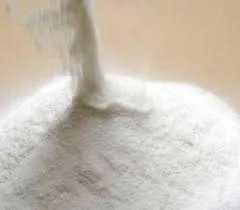The Versatility of Methyl Cellulose as an Adhesive
Methyl cellulose, a derivative of cellulose, has gained significant attention in various industrial applications, largely due to its unique properties. As a non-toxic, biodegradable, and versatile material, methyl cellulose serves as an effective adhesive in many fields, ranging from construction to food processing. This article will explore the properties, applications, and future potential of methyl cellulose as an adhesive, emphasizing its significance in contemporary material science.
Understanding Methyl Cellulose
Methyl cellulose is produced by treating cellulose, which is derived from wood or cotton, with chemical agents that introduce methoxy groups. The resulting compound is water-soluble and forms a gel when heated, making it particularly useful in various applications requiring adhesive properties. One key attribute of methyl cellulose is its ability to form a viscoelastic film upon drying, allowing it to maintain cohesion without becoming brittle. This property is critical in adhesive applications, where flexibility is often required.
Applications in the Construction Industry
In the construction industry, methyl cellulose is often used as an additive in mortars and plasters. It enhances the workability of these mixtures while providing water retention properties, which are essential for curing processes. The addition of methyl cellulose improves adhesion to various substrates, ensuring that the materials bond effectively and maintain their integrity over time. This is particularly useful in tile adhesives, as it helps mitigate the risk of cracking due to thermal expansion or contraction.
Furthermore, the water-retaining capability of methyl cellulose allows for extended open times during application, providing greater flexibility for contractors to adjust placements before the adhesive sets. This characteristic is extremely beneficial in large-scale construction projects, where accuracy and timing are critical.
Methyl Cellulose in Food Production
In the food industry, methyl cellulose serves as a stabilizer and thickening agent, but its adhesive properties also play a significant role. As a food-grade adhesive, methyl cellulose is utilized in the manufacture of various food products, such as gluten-free snacks and baked goods. It helps bind ingredients together, maintaining product integrity and texture, while being safe for consumption.
adhesive methyl cellulose

Additionally, methyl cellulose can be used in the production of plant-based meat alternatives. As these products strive to replicate the textures and consistencies of animal-based proteins, methyl cellulose acts as a crucial adhesive agent that aids in binding ingredients such as soy protein, pea protein, and vegetable fibers. This aspect not only contributes to the structure of the product but also enhances mouthfeel, a critical factor in consumer acceptance of meat substitutes.
Environmental Considerations and Sustainability
The increasing focus on sustainability in various industries has positioned methyl cellulose as an attractive option compared to traditional synthetic adhesives. Being derived from natural cellulose, methyl cellulose is biodegradable and reduces the environmental impact typically associated with synthetic adhesives. Moreover, as industries face growing regulatory pressures to minimize harmful chemicals, methyl cellulose offers a non-toxic alternative that meets safety and environmental standards.
Future Directions for Methyl Cellulose
Research into methyl cellulose continues to expand, exploring its potential in new applications and formulations. Innovations in nanotechnology may lead to the development of methyl cellulose-based adhesives with enhanced properties, including improved strength and faster curing times. Additionally, modifications to the polymer structure could tailor its properties for specific uses, adapting it to meet the unique demands of various industries.
The shift towards more sustainable materials will likely continue to drive interest in methyl cellulose, as companies seek to incorporate eco-friendly solutions into their products. With ongoing studies revealing new applications and benefits, methyl cellulose may soon play an even more significant role in adhesive markets.
Conclusion
Methyl cellulose stands out as a versatile and sustainable adhesive, offering myriad benefits across various industries. Its unique properties make it an essential component in construction and food production while aligning with contemporary environmental priorities. As research and innovation pave the way for enhanced formulations, the future of methyl cellulose in adhesive applications appears promising, cementing its position as a valuable material in achieving both performance excellence and sustainable development. By continuing to explore and capitalize on its potential, we can ensure that methyl cellulose remains integral to the evolving landscape of adhesive technology.
-
The Application and Significance of Construction RdpNewsMay.19,2025
-
Industrial Grade HpmcNewsMay.19,2025
-
Building Coating Adhesive Building Coating Adhesive HpmcNewsMay.19,2025
-
Application Of Hpmc For Detergent For Detergent In DetergentsNewsMay.19,2025
-
Application Of Hpmc Cellulose In Cement-Based MaterialsNewsMay.19,2025
-
Application Of High Quality Hpmc For Construction In The Field Of ConstructionNewsMay.19,2025




